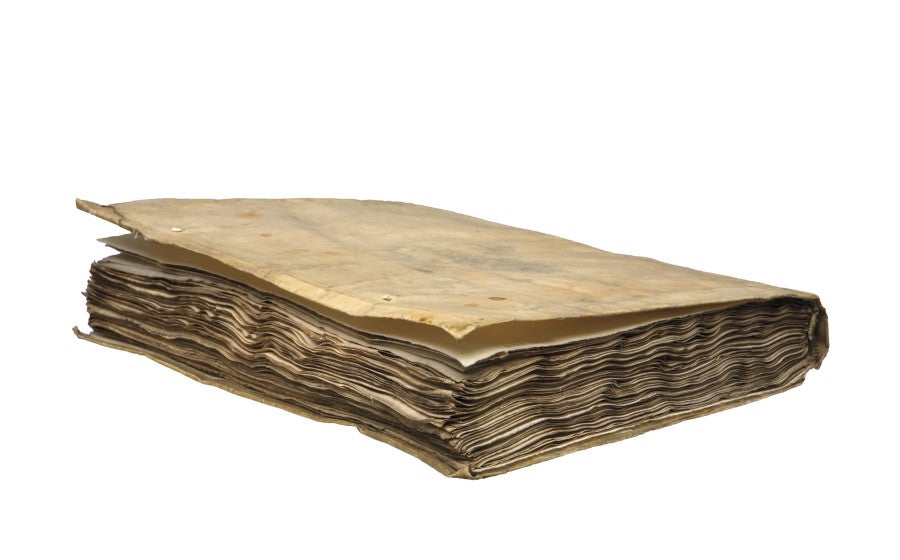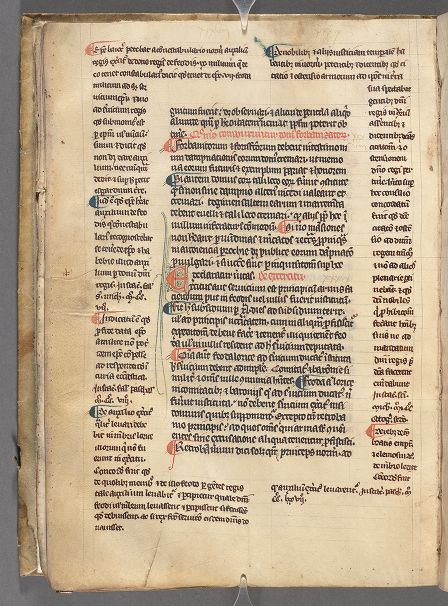



‘Summa de Legibus Normanniae’ goes digital

Duplication of the laws of Normandy was done by scribes. At times a whole roomful would copy words as they were dictated. At other times, a scribe would work alone to copy the text line by line. According to Donahue, the occasional skips and omissions in the ”Summa de Legibus” suggest that this manuscript was originally copied in the latter manner.
“I am interested in the process of development [of law] that is happening over the centuries in Normandy,” said Donahue, who hopes that the digitization of this important record of legal practice in feudal Normandy and Norman England will contribute to an understanding of the period for scholars all over the world.
Written in Latin, circa 1300, the manuscript describes customary law in Normandy in the 12th and 13th centuries. Its 127 vellum pages include regulations on marriage, land ownership, finance, trading, the crusades, trial by combat, military service and even a legal issue arising from too much snow.
It is one of 25 known copies of this manuscript, and text variations between copies and a wealth of marginal commentary raise their own intriguing questions. This is “a living text,” said Donahue. “The changes reflect what the law really was.”
According to Donahue, the manuscript promises to be especially valuable for the study of early English law. Though it was probably written in Normandy, marginal annotations by an English hand are evidence of the early appearance of “Summa de Legibus” in England. “Why would someone in England want a copy of a manuscript that described the custom of Normandy after Normandy had ceased to be a possession of the English crown?” said Donahue. “That is a puzzle, one of the many that are yet to be solved.”